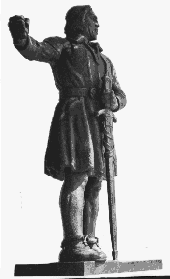Meet the Middle Ages
BackEngelbrekt Engelbrektsson

Engelbrekt was born in the 1390 ´s. He belonged to a German aristocratic family, which had come to live in Norsberg. As a young man, Engelbrekt was a soldier in King Erik ´s army. We do not know exactly what he looked like, but a priest in Uppsala described him as short, sensible and brave.
He led what is known as the Engelbrekt Rebellion. In 1435, Engelbrekt was made captain of the realm and ruled over the Castle and county of Örebro.
Engelbrekt and his men suffered greatly during the battles. Often starving, they had to protect themselves against the enemy. The winter of 1436 was very cold and many soldiers froze to death. Engelbrekt was in great pain from his joints. Eventually, he could only walk by using crutches.
Engelbrekt and the Councillor Bengt Stensson Natt och Dag never became friends. Once, Engelbrekt, with his wife and servants, was on his way to Stockholm to meet the King ´s Counsel and to try to settle matters between them. On his way, he passed the Castle of Gökholm, which belonged to Stensson. Without a warning, Engelbrekt was attacked by a group of soldiers from the castle. He managed to defend himself with his crutches, but eventually his head was split by a severe blow to the head. Engelbrekt ´s wife and servants were captured.
Engelbrekt was buried in Örebro. His shrine became a place of pilgrimage and miracles were said to have happened there, for example that sick people had recovered. Engelbrekt was worshipped as a popular saint.